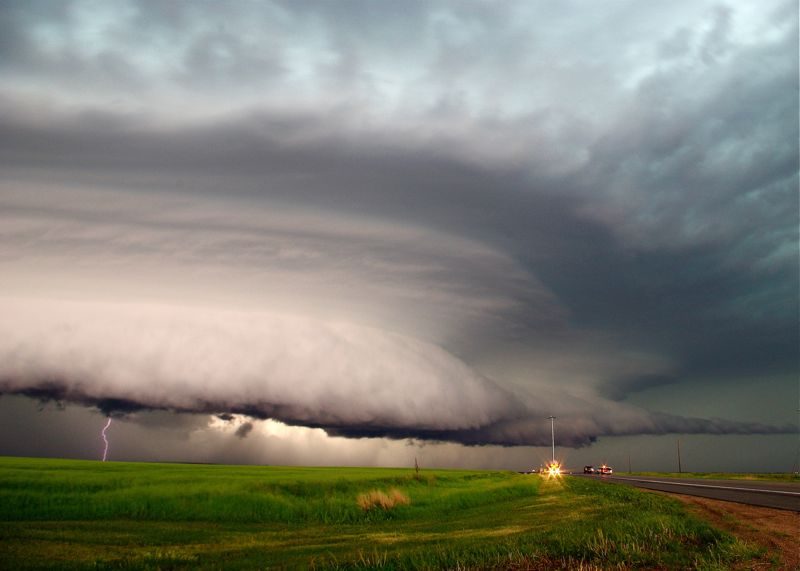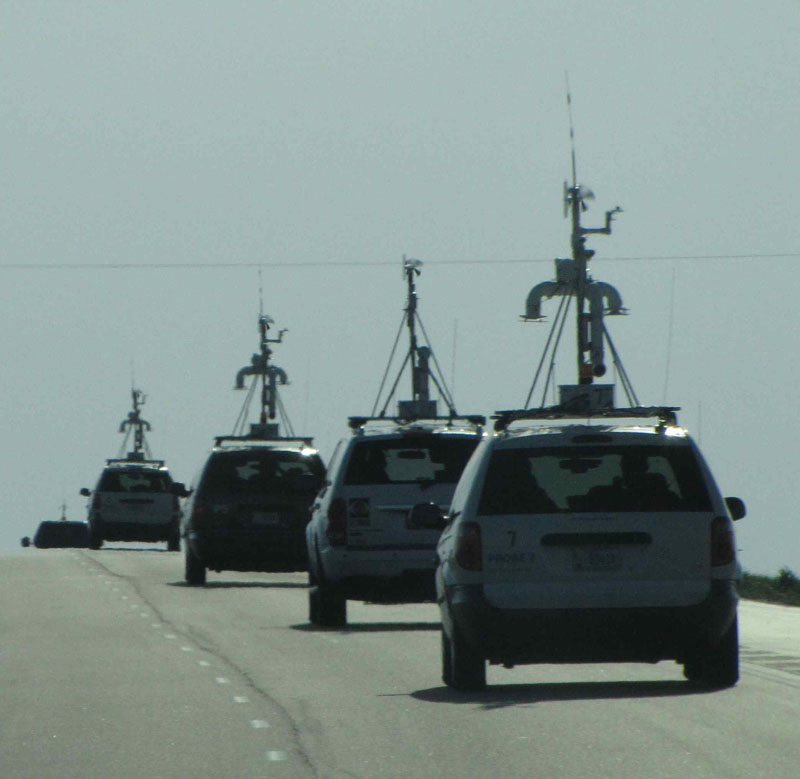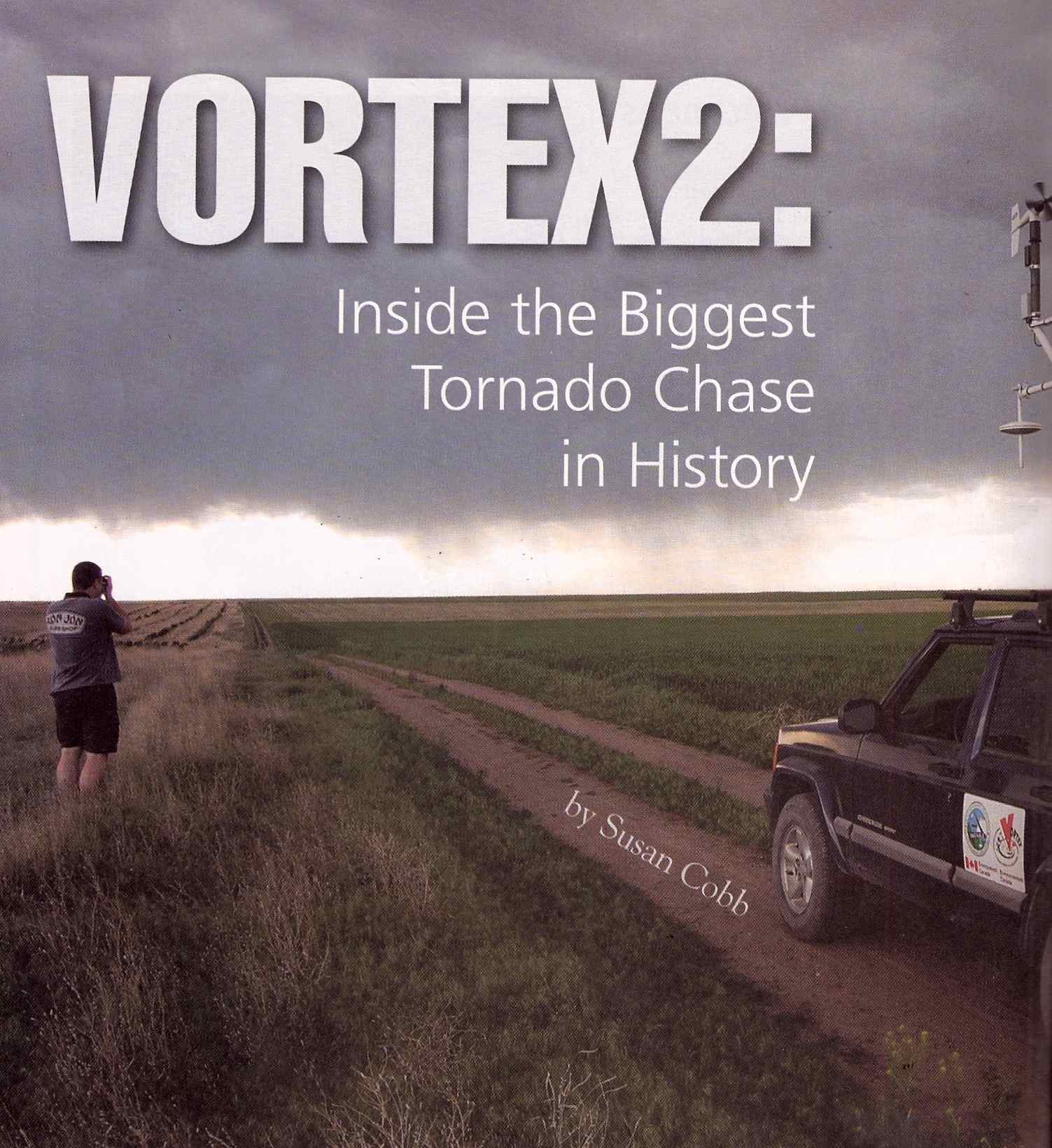NOAA World, NOAA’s online newsletter recently posted an article about VORTEX2, a historic tornado project. Read the article here: http://www.noaaworld.noaa.gov/scitech/aug2010_scitech_1.html, or enjoy the text below!

Our quest for knowledge leads us to outer space and the depths of the ocean using spacecraft, ships and submarines. Flatbed trucks, mini-vans, and converted ambulances generally do not inspire one to think of epic scientific journeys. However, this spring, an armada of land-based research vehicles embarked on a historic expedition in the Great Plains to collect clues about the mysteries behind tornadoes.
More than 100 researchers and students assembled the largest collection of cutting-edge weather equipment in history for the NOAA and National Science Foundation-sponsored Verification of the Origins of Rotation in Tornadoes Experiment 2009-2010, or VORTEX2. Their mission was to cast a net of weather instruments around and under rotating thunderstorms in hopes of catching a tornado as it formed.
The fieldwork arm of VORTEX2 is now complete and the hard work of data analysis is underway.
Why are Scientists All Spun Up About Tornadoes?
Like space and the sea, much of the atmosphere remains a mystery. A thunderstorm can be a massive monster climbing miles into the sky and stretching hundreds of miles across the land. How does such a beast begin to rotate? What causes it to concentrate its energy into a spinning whirlwind a fraction of the size of its source? What draws the funnel to the ground to destroy and, moments later, causes it to recoil upwards into the atmosphere? These questions are what drive researchers to solve the mysteries behind tornadoes.
VORTEX2 was designed so researchers could observe all the scales of motion from the thunderstorm down to the tornado.
“Understanding tornadoes means understanding the storm environment,” said Don Burgess, a retired NOAA research meteorologist who works part-time with the Cooperative Institute for Mesoscale Meteorological Studies in Norman, Okla., and a VORTEX2 Steering Committee member.
One use of VORTEX2 data will be to develop computer models that are so specific they can predict the behavior of individual thunderstorms and ultimately tornadoes.
“What VORTEX2 is trying to do is extend tornado warning lead times from the current 13 minute average to 30-50 minutes,” said Lou Wicker, also a VORTEX2 Steering Committee member and NSSL scientist.
Fast and Furious Tornado Research
VORTEX2’s modern day explorers roamed across nine states over a five-week period in the spring of 2009 and another six weeks in 2010. The nomadic fleet included 10 mobile radars, a remote control aircraft, weather balloons, instrumented vehicles, and vehicles equipped to drop instruments in the path of a storm.
“The daily search for tornadoes was relentless, sometimes driving more than 500 miles during a single mission,” said Sean Waugh, University of Oklahoma student working at NSSL and on VORTEX2. “Many vehicles in the project logged more than 25,000 miles.”
Reflecting Back on a Whirlwind of a Research Tour
VORTEX2 teams have been home for almost two months now. Finally, there is time to reflect on the data collection phase of the project.
“Last year, we only got one [tornado], but the one we got was a very good one – a significant tornado,” said Burgess. “We encountered quite a number of smaller, short-lived tornadoes this year,” he added.
In total, VORTEX2 researchers gathered data on at least 30 rotating thunderstorms (known as supercells) and 20 weak or short-lived tornadoes this year.
“These [smaller, short-lived tornadoes] are the most prevalent type of tornadic activity,” said Wicker. “And, they are the most difficult to forecast, detect and issue warnings for.”
More Hard Work Ahead
Analysis of the vast amounts of data takes time, but its time well spent.
“We’ll be looking at this data for five to 10 years,” Wicker said. “Two years from now we’re going to have a much better feel for what we’re going to learn from this experiment.”


